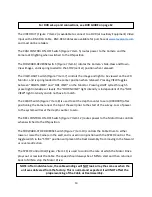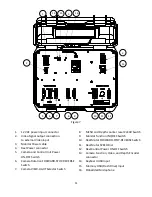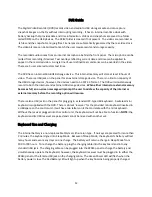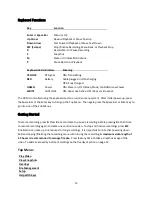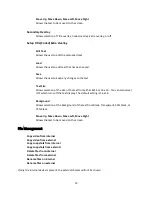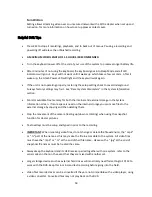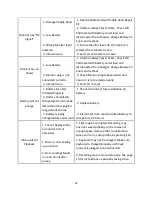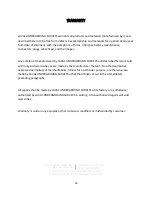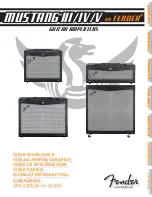
23
or common water strata shared with other wells, a particular time of the day when the other
pumps are off. Sometimes you can shut off the entire field to achieve a static condition; or
in an Artesian field, turn on all the other pumps to stop the muddy flow.
•
Falling water generally only creates a problem near the surface because it drives air into the
water column.
•
Drilling mud in suspension is a very difficult problem, only occasionally curable by
flocculation. It may require pumping the well clear.
•
Well cleaning chemical and drilling detergents interfere with any chemical clarification
process. Again, pumping until clear is the solution.
•
Often a layer of oil will be encountered on the top of the water surface, especially when
inspecting oil lubricated pump well casings. If oil is anticipated, the outside of the lens view
ports can be soaped literally with a Liquid detergent. The Camera visibility will be restricted
out of the water, but once the oil layer (often 20 feet deep) is penetrated, the detergent
may be washed off the viewing port by raising and lowering the Camera. The oil should be
wiped from the Cable and Camera when removing from the well.
•
Air bubbles may accumulate on the Lens Port when first entering the water. Raise and lower
the Camera until the bubbles are removed.
•
Caution should be taken not to operate the R-Cam System Camera in contaminated, acidic,
or salt environments. If the R-Cam Camera and Cable is exposed to a contaminated or salt
intruded well, all exterior surfaces of the Housing, Kevlar Cable, Cable Head and Centering
Bands must be thoroughly cleaned and rinsed with fresh water immediately after being
removed. Warranty to the system may be voided if damage occurs as a result.


